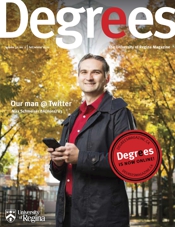Seventy-nine years ago the Regina Rifles stormed Juno Beach in Normandy as part of the largest seaborne invasion the world has ever seen. The regiment was the first to make landfall and by the time the day ended had made further progress inland than any of the invading forces. History master’s student Kelsey Lonie BEd’15, MA’24 is playing an important role in a project that will culminate with the erection of an eight foot bronze statue of a Regina Rifleman at a ceremony next year at Juno Beach to honour the sacrifices of Saskatchewan soldiers on the 80th anniversary of the Allied invasion.

Kelsey Lonie’s love of history was sparked by what she describes as stories and history coming together, especially from hearing the experiences of her grandparents Irene and Tony Schmidt in the 1930s, the Second World War, and the years following.
“It started with hearing their stories; their perseverance in doing what had to be done during the war. It was about ordinary people doing extraordinary things,” she observes.

Her grandmother was a member of a little-known organization formed by the British Columbia government, the Women’s Land Army (WLA), while her grandfather served at a gun battery protecting the Halifax harbour from enemy attack.
A change in direction
Lonie would undertake a deeper exploration of her grandmother’s story later, but she initially decided to share her love of history as a teacher, earning her Bachelor of Education degree from the University of Regina in 2015.
For the next eight years she taught Grade 3 students at the Regina Christian School. One of the highlights was accompanying her students to visit veterans at the nearby Wascana Rehabilitation Centre and encouraging them to write letters to the vets.
“The kids got to meet the veterans and learn from them; it was a really tangible way to keep history alive.”
In 2022 she took a leave of absence from teaching to pursue a master’s degree in History from the U of R. Her thesis: The role of British Columbia’s Women’s Land Army, and particularly its connections to Saskatchewan.
“I realized I had stumbled upon my thesis through the stories of my grandmother,” Lonie says.

Dr. Ken Leyton-Brown - whose research interests include western Canadian history - served as her thesis advisor. “She knew exactly what she wanted to do,” Leyton-Brown says, “and she had a passionate interest in the topic. The history of the WLA in BC was virtually unknown, and Kelsey was the perfect person to explore it.”
The government of British Columbia established a Women’s Land Army to recruit workers to assist with the harvest, replacing men working in the agricultural sector in BC who joined the armed forces or took work in factories. British Columbia’s first in-province recruiting effort fell far short of the hands needed, so the call for help expanded to women in Alberta and Saskatchewan. Lonie’s grandmother was one of the young women who responded.
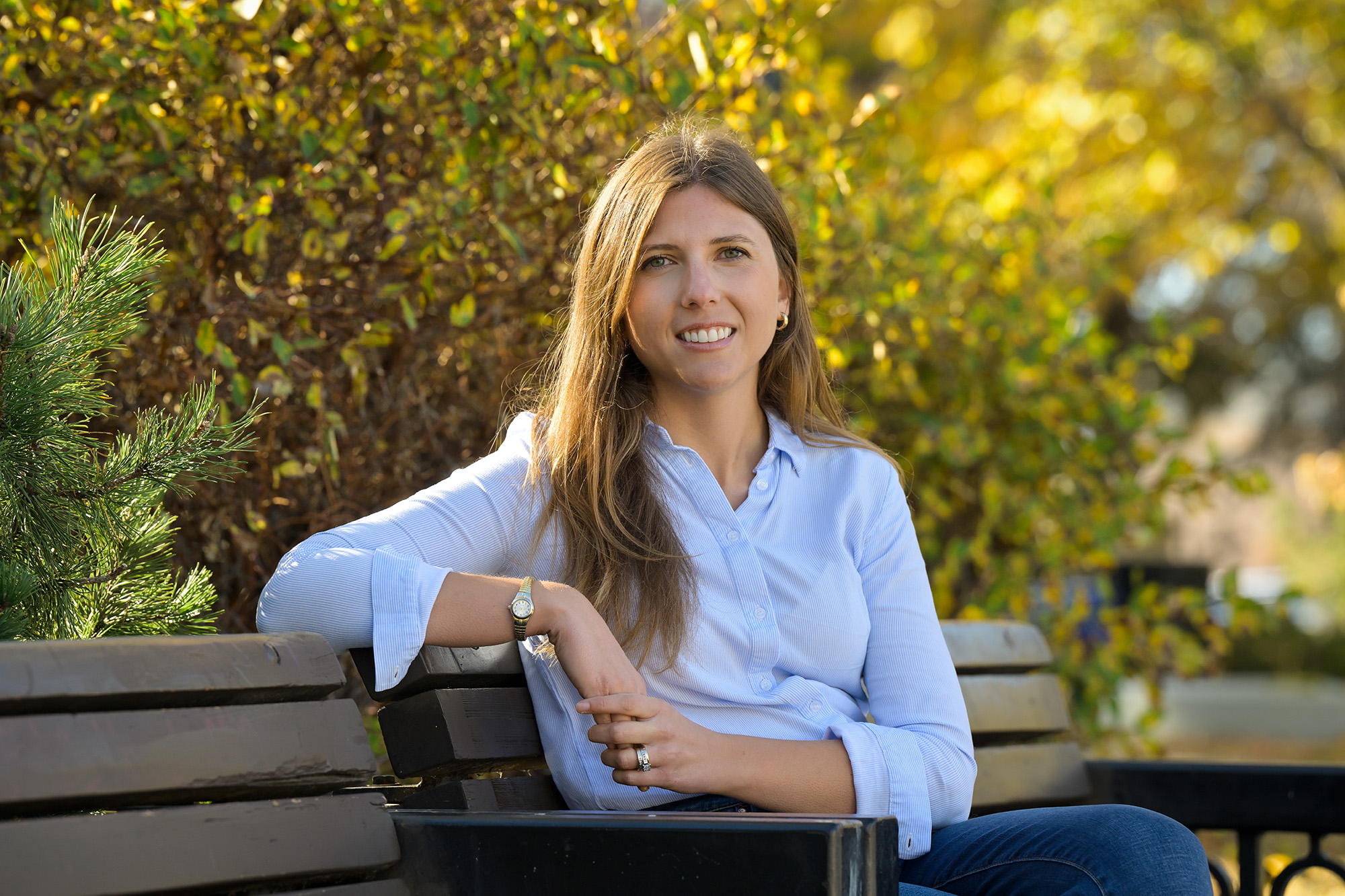
Opportunity knocks
While she was working toward her master’s degree, Lonie decided to take her career in a different direction; to become a historian, with a specific focus on the history of World War Two. A unique opportunity arose to pursue that interest when, as a board member of the Regina branch of the Royal United Services Institute, she heard a presentation from the Royal Regina Rifles Senate and Trust, a registered charity comprised mainly of retired members that helps support the regiment. The presentation outlined the Trust’s plans to commemorate the 80th anniversary of the Rifles’ leading role in the D-Day landing at Juno Beach in Nazi-occupied France in June, 1944.
“Right away, I was hooked by the presentation,” Kelsey says. “I made some suggestions of other actions they could take, which led to the Trust hiring me as their historian and communications liaison (in May 2023) to help commemorate the history and legacy of the Rifles.” A key initiative is what she calls “the legacy piece”; providing opportunities for young people to be involved in the project, learn the stories, and be able to take away something from it. “How do we make history tangible today; how do we make it matter today? That’s what I was brought on to do,” she says.
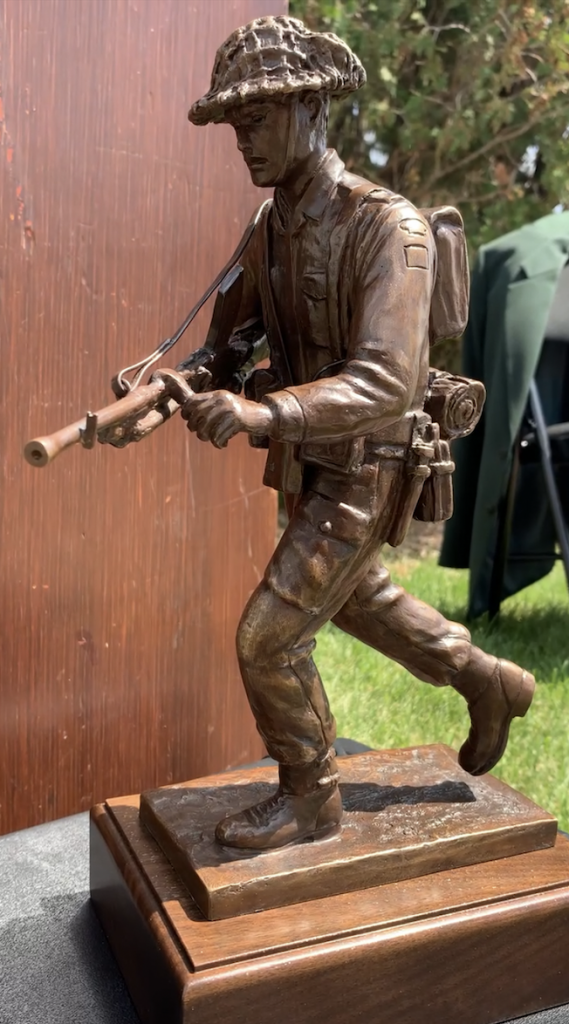
A key element of the Trust’s plan is the commissioning of an eight-foot high bronze statue of a Regina Rifles soldier that will be installed on the seawall at Juno Beach in June 2024. Unveiling the statue will be one of the highlights of a ten-day Trust’s Tour of Honour to allow current members of the Rifles, retired members, and supporters to visit several sites that form part of the regiment’s history on D-Day and the ensuing battles in the Fall of 1944, as well as a couple of sites from the First World War.
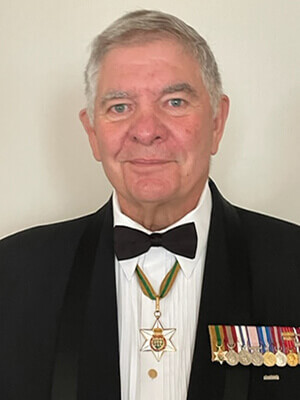
Ambitious plans
Retired Brigadier-General Cliff Walker, whose 35-year military career includes being appointed Commanding Officer of the Rifles when he was 28, says the project - with the goal of raising almost $500,000 - is the most ambitious the Trust has ever undertaken. Walker, who is a past president of the Senate and Trust, describes another former Commanding Officer of the Rifles, retired Lieutenant-Colonel Ed Staniowski, as the brainchild behind the commemoration project - named Operation Calvados after an area of France where the Rifles fought (and enjoyed the local apple brandy when they were on leave.) Staniowski notes that during the Tour, the Trust will host a dinner in honour of the regiment, with officials from Normandy and Canada among the invited guests. The Trust has also invited HRH Princess Anne, Colonel-in-Chief of the regiment, to attend the unveiling.
“Kelsey will help us capture these events and preserve them for future generations,” Staniowski says. “She has tremendous drive, and is a natural fit for what we want to achieve with this project.”
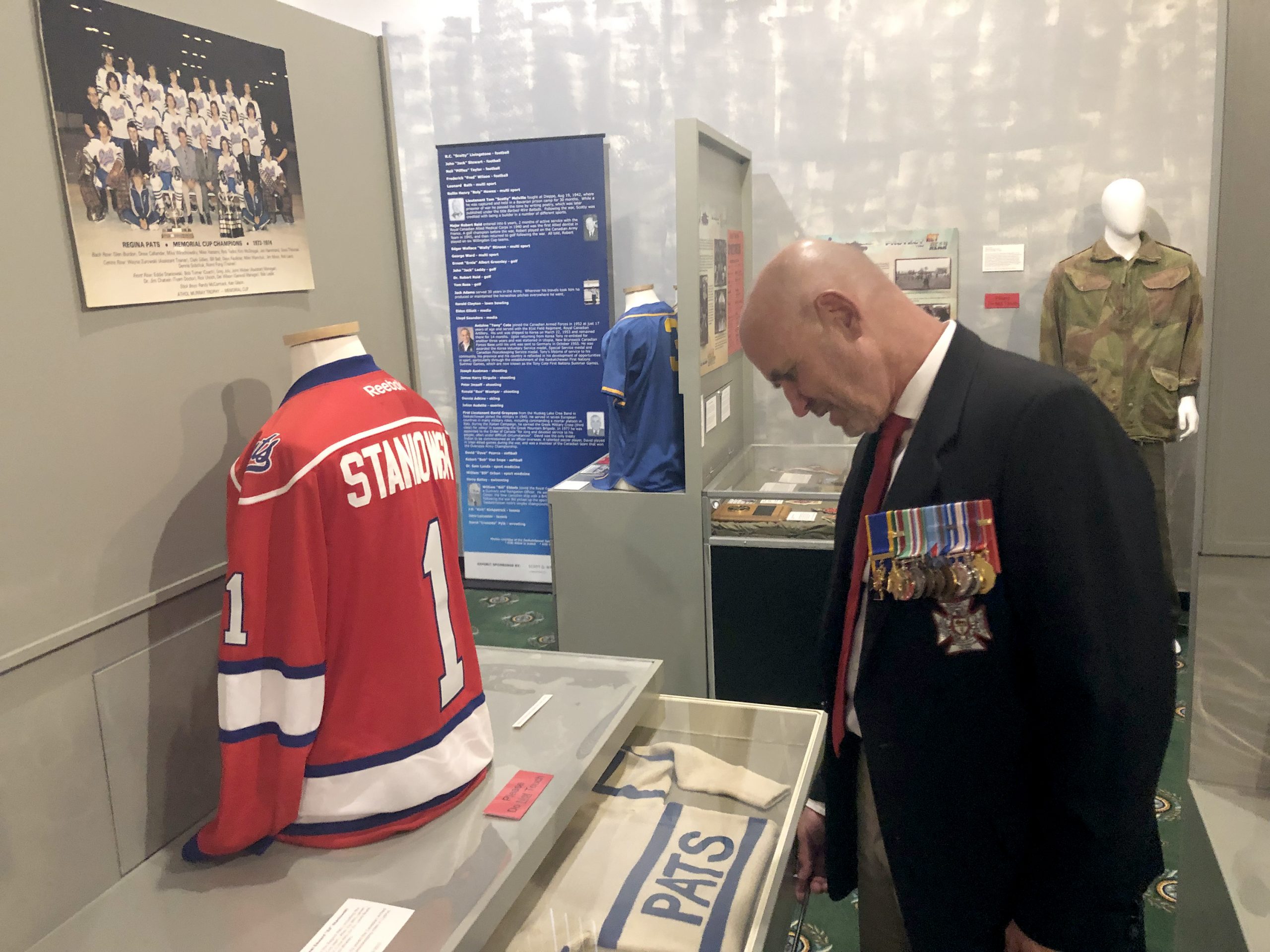
Kindred spirits
Lonie has held discussions with U of R President Dr. Jeff Keshen about possible partnerships with students in the departments of History and Film, for example. Much of the Rifles’ D Company who stormed Juno Beach on D-Day were Indigenous, she adds, so she is looking for ways to honour their stories as well.
“While the history of the University goes back about 50 years,” Keshen notes, “our roots go back to 1911, and that includes important military connections. There are plaques located inside the main entrance doors of the College Avenue building, with the names of students and staff who volunteered. I have laid wreaths there,” Keshen continues, “and because we have current and past students, faculty and staff whose relatives served in both world wars I will visit the Memorial Wall at the Legislative Grounds on their behalf this Remembrance Day.

“As for Kelsey’s terrific master’s thesis, it brings to light another perspective on how Saskatchewan people - in this case young women who volunteered to go to British Columbia to help with food production - contributed to the war effort,” Keshen says. “And now she has opportunities to discover and tell more stories, through her work with the Rifles.”
Lonie has created a website telling the history of the Women’s Land Army. You can find it here. She is also writing a book based on her thesis topic.



